26th Anniversary of Death of US Secretary of Commerce Ron Brown Commemorated
ZAGREB, 3 April 2022 - A memorial ceremony was held in Dubrovnik on Sunday to commemorate the 26th anniversary of a plane crash, in which a US business delegation led by Secretary of Commerce Ronald Brown was killed.
The US Undersecretary of Commerce for International Trade, Marisa Lago, said that mourning continued for the 35 people tragically killed while working for peace and prosperity in the war-torn region.
The then US President Bill Clinton described the mission led by Ron Brown as "a mission of peace and hope", she recalled. "How pleased the members of the mission would be today with us in Dubrovnik, Croatia, a NATO ally, an EU member and a regional economic success story", she added.
Lago said she was confident that Secretary Brown and the people he led would not shrink back from the challenges of today and would share her conviction that through partnership and cooperation we can persevere together in the search for peace, prosperity and security.
The ceremony was attended by Dubrovnik-Neretva County Prefect Nikola Dobroslavić, Dubrovnik Mayor Mato Franković, Dubrovnik Airport Director Ivan Maslać, US Chargé d'Affaires Mark Fleming, Colonel Darko Arapović on behalf of the Defence Ministry and local government officials.
The participants in the commemoration ceremony signed the book of condolence at the Ronald Brown Memorial House.
A US military aircraft carrying Secretary of Commerce Ronald Brown and 34 other persons crashed in a storm near Dubrovnik's Čilipi Airport on 3 April 1996. All passengers were killed, including two Croatian nationals. The US delegation was travelling to Dubrovnik to meet with Croatian officials.
For more, check out our dedicated lifestyle section.
Public Sector Unions Reject Government's Offer of 2% Increase in Base Pay
ZAGREB, 3 April 2022 - The executive authorities of all 11 public sector unions have rejected the government's offer of a 2% increase in base pay and demanded a 4% increase, giving the unions the green light for a strike.
"Industrial action will depend on the outcome of the next meeting between government and union negotiators, expected to be held next week", the secretary general of the Matica Association of Croatian Trade Unions, Mirela Bojić, said in a statement on Sunday.
The decision has been unanimously made by the negotiating committee on a basic collective agreement for public sector workers after the temporary suspension of talks between the unions and the government.
"The latest data on inflation shows that prices have increased by 6.3% on an annual level. Thus, the public sector unions continue to insist on a base pay increase of 4% as of 1 April, and for additional talks at the end of May on increasing the base pay further in the second half of the year, depending on inflation, other pay rates in the country and the economic situation", the unions said.
"It is inconceivable that the government, despite the rise in living costs, despite the rise in production and despite the higher than expected budget revenues, is deciding to reduce pay for people who bore the brunt of maintaining society and government at the time of the pandemic. Such a socially autistic approach is appalling to all workers and their families", the unions said.
For more, check out our business section.
Croatia's Acute Myeloid Leukemia Survival Rate 5% Below EU Average
ZAGREB, 3 April 2022 - About 150 people in Croatia are annually diagnosed with acute myeloid leukemia (AML), and the survival rate is about 5% below the EU average, a round table on the treatment and quality of life of AML patients heard earlier this week.
"In Croatia, every week three persons are told they have AML, which is 156 annually, according to data from the Cancer Register for 2019. The five-year survival rate is 12.6%, compared to the EU average of 17.2%, which shows that there is considerable room for improving treatment", the participating doctors and patients said at the round table.
AML is the most common type of acute leukemia in adulthood and the most frequent age at diagnosis is 65 years, with increasing incidence after 65 years of age. It has the lowest survival rate compared to other types of leukemia and is treatable in about 40 per cent of patients aged under 60 years, most frequently by bone marrow transplantation from an unrelated donor.
"In Croatia, we have 70,000 bone marrow samples and we can find an unrelated donor relatively quickly, which is why nearly every patient in Croatia has a chance to get a transplant and be cured. The number of transplantations has reached one hundred annually, which is within the European average," haematologist Radovan Vrhovac said.
For more, check out our dedicated lifestyle section.
Dodik says Dubrovnik's Concern About Trebinje Airport Project Should be Ignored
ZAGREB, 3 April 2022 - The Serb member of Bosnia and Herzegovina's state presidency, Milorad Dodik, said on Sunday he did not care what the local government in Dubrovnik thought about the construction of an airport at Trebinje, adding that no attention should be paid to that.
Commenting on the letter which Dubrovnik Mayor Mato Franković had addressed to the Chairman of the Council of Ministers of Bosnia and Herzegovina, Zoran Telgetija, asking for suspension of all plans to build the Trebinje airport before assessing the environmental impact of the project, Dodik told the press in Banja Luka that the mayor of Dubrovnik should simply be ignored.
"It's as if someone from Rudo (a small town in eastern Bosnia) wrote a letter to US President Joe Biden," Dodik said.
He said he did not know why the letter was being given attention at all when the only interlocutor to the authorities in Bosnia and Herzegovina was the Croatian government and not the Dubrovnik city administration.
In his letter, Franković reminded Telgetija that the airport would be built in highly porous karst terrain only eight kilometres from the source of the River Ombla, which supplies Dubrovnik with drinking water.
Trebinje, a town of barely 30,000 inhabitants, is about 50 kilometres away from the airports at Mostar, Dubrovnik and Tivat.
For more, check out our dedicated politics section.
Franz Ferdinand to Play Zagreb on 25 April
ZAGREB, 3 April 2022 - Scottish rock band Franz Ferdinand are playing Zagreb's Dom Sportova Hall on 25 April as part of their Hits To The Head tour, the organisers, LAA agency, have announced.
Their greatest hits album, Hits To The Head, is currently the best-selling foreign album in Croatia. This collection of 20 tracks, including two new ones, gives a cross-section of songs from their two decade long career.
Franz Ferdinand were formed in Glasgow in 2001 and have released five studio albums to date, selling millions of records worldwide and winning many music awards. Their hits include "Darts Of Pleasure", "Take Me Out", "Do You Want To", "No You Girls", "Walk Away", "This Fire", "Love Illumination", "Michael", "Ulysses", "The Dark Of The Matinée" and "Glimpse Of Love".
The current lineup is Alex Kapranos (vocals, guitar), Bob Hardy (bass), Dino Bardot (guitar), Julian Corrie (keyboards) and Audrey Tait (drums).
It will be the first foreign indoor concert in Croatia after more than a two-year pause due to the COVID-19 pandemic.
For more, check out our dedicated lifestyle section.
Planting Traditions in Slavonia: What Slavonians Like to Cultivate
4th of April 2022 - From Saint Patrick's Day, which is on March 17, Slavonians usually start planting crops for various reasons - for personal use, animals, and more. The planting season in Slavonia has thus begun, and we're taking a look at planting traditions in Slavonia.
Saint Patrick’s Day doesn’t hold particular importance in Croatia, except for the name day that people with a similar name celebrate. However, in Slavonia, this day marks the start of planting the crops that will be available for harvesting, and furthermore, some of those products will be stored for winter. Crops don’t have to necessarily be planted specifically on St. Patrick’s Day but after that date, people hurry to sow their plants before the rain. Why does it need to be done before the rain? For a simple reason - when rain occurs after sowing, the seeds will swell and the beginning of the growth process is in motion.
That is only the “first round” of the planting since not all plant crops can be immediately be planted. These next vegetables are most common in the “first round of planting”.
Potatoes
A useful vegetable that can be used in many ways and because of its flexibility and endurance during its growth, this plant is unavoidable in Slavonia. Potatoes from Lika are one of the most famous Croatian products. When planting, people make rows in their gardens that are approximately 25 centimeters deep and start putting potato tubers with sprouts, one by one, one foot away from each other (you can measure distance with your foot) and later buried with a hoe. Red and white potatoes are the most prominent ones and are planted for different uses - red potatoes are good for frying and roasting, and white ones are for boiling and cooking. People who don’t have big gardens or lands can also plant on their balconies or small spaces indented for planting.
Onion
Onions with potatoes are in the same tier of importance for Slavonians and have mostly the same attributes. Flexibility in its handling in the kitchen and mostly pretty endurable, this crop has many good uses. However, there is a problem that, of course, can be avoided. The danger of rotting is pretty common with this plant (which can be also said for potatoes but in smaller measure) and if not harvested on time, this is an unavoidable problem. Why? Well, when harvested, our ancestors would leave onions on the field to dry but with climate change and far harsher summers, they’re usually put under the canopy or whatever place where the sun isn’t blazing hot. Onions planted in March are usually ready for harvesting in July but even “young” onions are good for use, especially at Easter time.
Carrots and parsley
An indispensable part of any stew or soup, these two plants are really an important part of planting traditions in Slavonia. It is also harvested in July but has multiple uses besides its root. For instance, parsley’s leaves are put in the meals as a spice and it is present in almost every Slavonian meal - čobanac, gulaš, fiš, and many more. Carrots, on the other hand, can be consumed young as onions - roasted young carrots coated in butter equals a great summer meal. One more plant that can be cultivated in small and closed places.
Garlic
This plant has, so to say, a mythic reputation in multiple cultures including Slavonia. From having healing attributes for stomachaches, strengthening immunity, and so on, to flexible uses in the culinary world. If any ingredient symbolizes Slavonia, that’s definitely garlic - spicy, strong smell and certainly a food that enhances every meal. Planting is the same as is with onions - bulbs are put in the ground and just gently covered with soil. A very durable plant that can withstand any weather and be usable all year. It can be cultivated anywhere.
Celery
Its head is mostly used for meals but the culinary internet revolution discovered newfound use for its leaves. They can be put in the pesto, carbonara, or just a sauce ingredient for extra flavor. Celery heads in Slavonia are used as an ingredient for soups and stews like previously mentioned gulaš and paprikaš. It can be stored for later use and its durable ingredient is why this plant is part of cultivating and planting traditions in Slavonia. In recent years, it's also been used as a juice! Rich with sodium and vitamin A.
Red beet
Also planted in the first round of planting, red beet has multiple uses and is one of the healthiest ingredients on this list. Its juice is used in the fitness world for strengthening a person's fitness and body. Furthermore, it can lower blood pressure and increase blood flow. Rich with folic acid, manganese, potassium, vitamin C, magnesium, iron and so many more. Its root in Slavonia is used mostly for winter storage, namely, pickled in glass jars. “Soily” taste and beautiful color make this ingredient an important plant in the Slavonian region.
Peas and string beans
These two at first glance seem the same but they’re not. Even though they’re from the same family of plants (legume or pea family), they can be used in different ways. Stews are probably most common in Slavonia for peas but string beans can also be prepared in salads or roasted with other vegetables. Their issue is that they’re really sensitive and require nonstop care. A great ingredient for various meals.
Those vegetables are most commonly planted in the first spring planting, however, a bit later in the spring season, seeds are replaced by seedlings, young plants that have already sprouted from their seeds. These include tomatoes, cabbage, swiss chard, broccoli, peppers, jalapenos, cucumbers, and many more. Cultivating from there needs to be on a higher level since these plants require more care which means more water, fertilizers, and fluids that protect the plants from harmful organisms - parasites. What’s also important to note is the importance of these crops, used and pickled for winter storage. Most common are homemade tomato sauce, pickles, so-called hunting salad, pickled pepper, mild and spicy, and many more.
If we look deeper, planting traditions haven’t changed much in recent decades. Proven methods from our ancestors still work, are even better than the modern ones we encounter today, and still feed generations of people in these areas. Every region in Croatia has its own traditions and that’s what makes Croatia so rich - whenever you go, you can see how Croatian people survived the toughest times and managed to use its resources in the best possible ways. Earth and ground we walk on are still one of the rare things that never let Croatians down and that’s reflected in planting traditions in Slavonia.
For more, check out our dedicated lifestyle section.
ABA League Play-Off Participant List Complete
April 3, 202 - With yesterday’s victory in Split, FMP Belgrade secured its place in the 2021/22 ABA League Play-Offs as one of six teams alongside Partizan and Red Star Belgrade, Budućnost, Igokea, and Olympia Ljubljana. These top six teams will still continue to battle for position in the next weeks to secure home-court advantage and possibly even a wild-card into the semi-finals.
The team that will finish the regular season at the top of the list (currently Red Star Belgrade with coach Dejan Radonjić) will secure a wild card into the semi-finals and will have a home-court advantage in both the semi-finals and the finals (should they win the best of three series). The runner-up (currently Partizan Belgrade coached by legendary Željko Obradović) will also have a wild card to go directly into the semi-finals.
.@KKBuducnostVOLI, @KKCedOL, @kkcrvenazvezda, @BCFMP, @BCIgokea and @PartizanBC have secured their spots in the 2021/22 AdmiralBet #ABALiga Playoffs! ??
— AdmiralBet ABA League (@ABA_League) April 3, 2022
What do you think, who will win the ?? pic.twitter.com/jMiAWVTFJ6
Teams 3-6 will play the quarter-finals third against sixth, to establish who will meet the runner-up and fourth against fifth to establish who will play against the regular-season champion. The finals will be played as a best of five series in a 2-2-1 format, meaning that the top seed team will start with two home games.
Meanwhile, KK Split player Toni Perković's dunk against FMP Belgrade was rightfully chosen as yesterday’s Play Of The Day. The David against Goliath set-up got the spectators at Gripe excited as it is not every day that you see a shooting guard dunk over a 208cm expert shot blocker like Ebuka Izundu.
ABA League Format:
The 14 teams play each other twice during the regular season to establish 6 teams that will play for the title, one team that will drop out of the league directly, and the “lucky 13th” having a chance to stay in the league by winning a best of three series against the runner-up of ABA League 2. The six teams that finish at the top of the league at the end of the regular season play each other in a playoff mode. The top two teams receive a wild card and enter the playoffs in the semi-finals, while the other four teams play each other first (3rd against 6th and 4th against 5th). The reigning champion is Red Star Belgrade who defeated Budućnost in a long 3-2 final series.
To read more about sports in Croatia, follow TCN’s dedicated page.
World Cup and Croatia: 5 Reasons to Dream of Glory (Again)
April 3, 2022 - The Vatreni already know their rivals for the biggest football event to be held in Qatar this year, and there are reasons to believe that Modrić and company can add yet another page to the wonderful history between the World Cup and Croatia.
There is no easy rival in the World Cup, and this should be well known by now. It doesn't matter what path took you to the biggest stage in football, once you're there all you think about is winning and advancing as far as you can. If not, ask Croatia in 1998 and twenty years later, in 2018. To qualify for the World Cup in France, Croatia had to play a two-game playoff against Ukraine, after finishing second in their qualifying group behind Denmark. They beat the Ukrainians 3-1 on aggregate, and destiny led them to finish third in their first-ever World Cup finals.
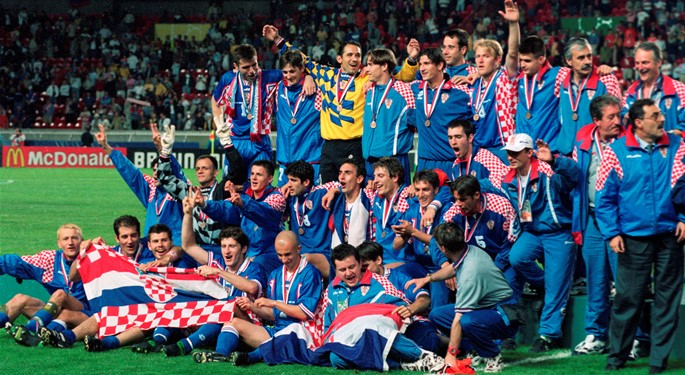
The Croatian national team, led by ''Ćiro'' Blažević, reached third place in France '98. (Image: Croatian Football Federation)
Unlike other national teams, Croatia's qualifying history has not been constant. After the success in France, Croatia qualified directly for the World Cups in Korea-Japan in 2002, and Germany in 2006. However, they would miss the World Cup in South Africa in 2010 and again would need the playoffs to qualify for the World Cups in Brazil in 2014 and the most recent in Russia in 2018. Little or nothing Messi's Argentina, host Russia or Harry Kane's England would have imagined, that the Croats did not travel to Russia on vacation. They had a mission, and this led them to overcome what was done by Šuker, Boban, or Prosinečki twenty years before that. Croatia, defying the odds, reached the final of a World Cup.
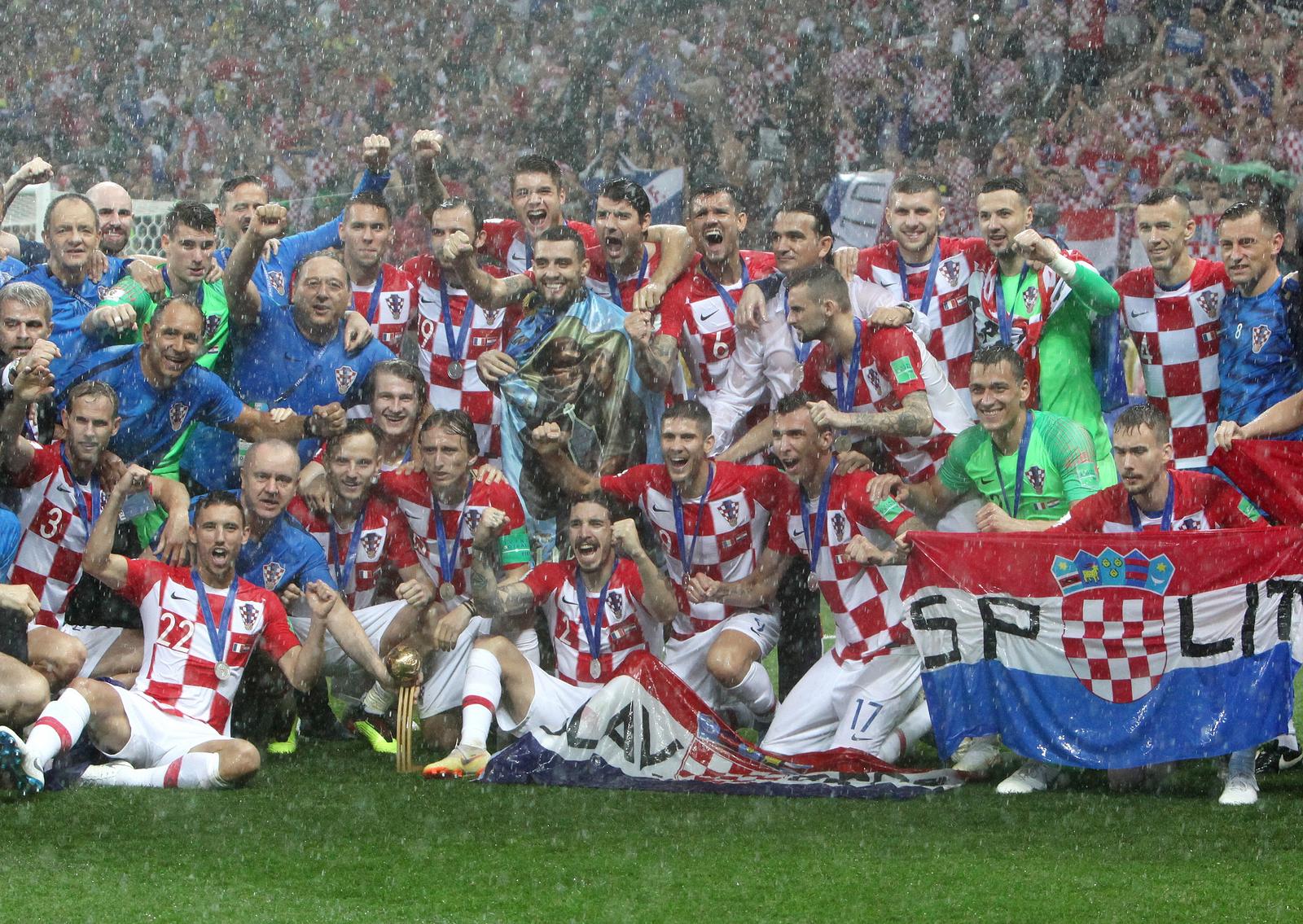
Croatia could not beat France in the World Cup final in Russia, but the second place achieved will always be remembered. (Photo: PIXSELL)
Can Croatia repeat a memorable feat? We think so, and here are 5 reasons why you should too.
Group draw
Two days ago, the draw for the group stage of the World Cup in Qatar was held. Croatia, despite coming second in the previous World Cup and finishing first in their qualifying group, was placed in Pot 2 of the draw. Those led by Dalić could not avoid playing against teams such as Brazil, France, Argentina, or Spain, but they could avoid others such as the Netherlands or Germany, also in Pot 2. Thus, the chances for Croatia to be put in a theoretical ‘‘group of death’’ were low.
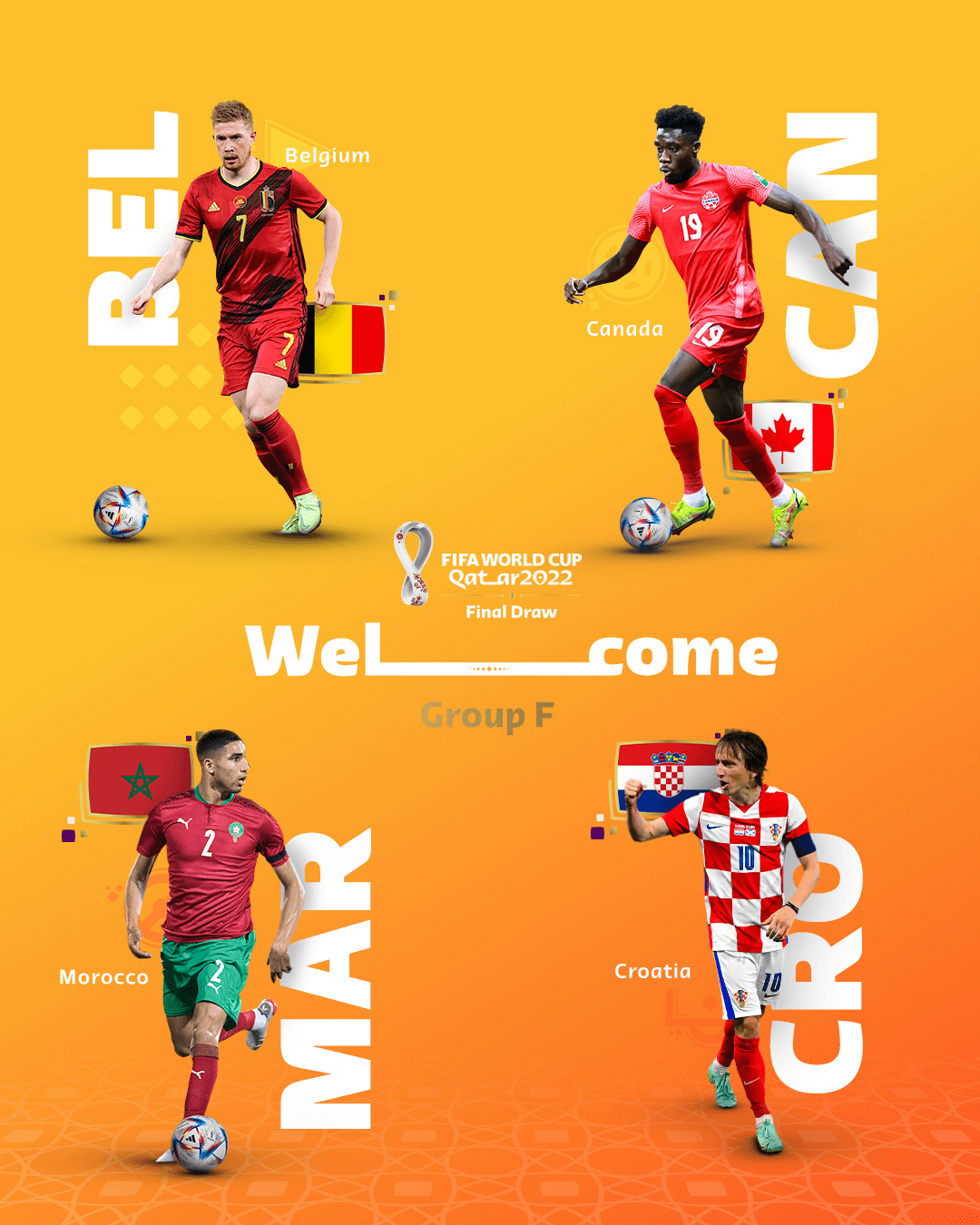
Image: @FIFAWorldCup/Twitter
Croatia will be in Group F, with the Belgian team as the leader, and where they will be joined by Canada and Morocco. I would like, at this moment, to remember the first thing I said at the very beginning: there is no easy rival in the World Cup. Oh yes, I've read loads of people on social media saying "not bad" or that it is an "affordable group for Croatia". The reality is that we are up against Morocco, a team that has matured since the last World Cup in Russia and one of the toughest in Africa. While the absence of Hakim Ziyech (Chelsea) may sound motivating for many, the Moroccans still have a group of talented players such as Yassine Bounou (Sevilla), Achraf Hakimi (PSG), Sofyan Amrabat (Fiorentina), Adel Taarabt (Benfica), Youssef En-Nesyri (Sevilla), or the very young Ez Abde, from Barcelona B.
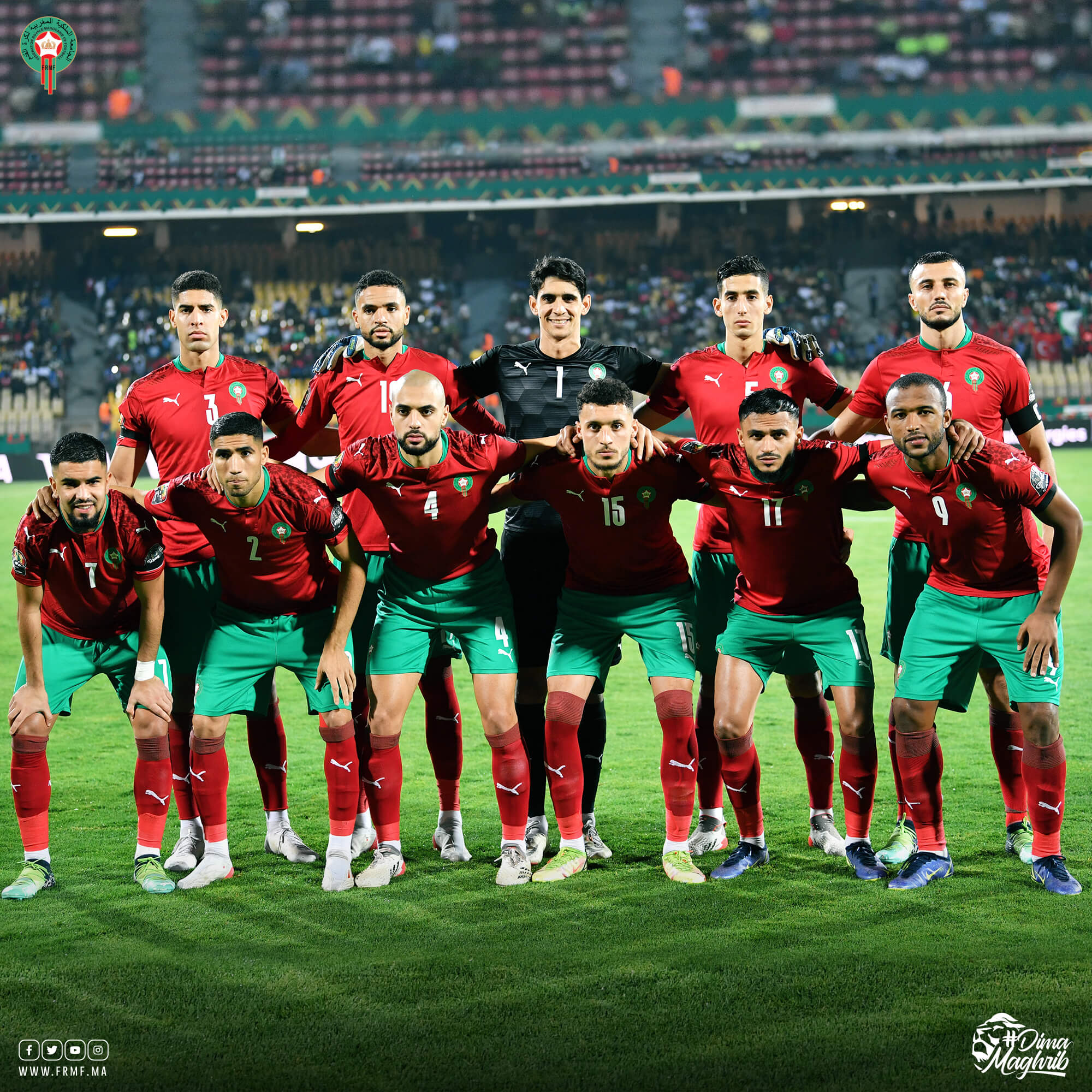
Croatia's first World Cup match will be against Morocco on November 23 at Al Bayt Stadium. (Image: @EnMaroc/Twitter)
Canada might sound to many like the rival to beat, but don't underestimate that the Canadians finished the CONCACAF standings in the first place and very comfortably ahead of more experienced teams like the United States, Mexico, or Costa Rica. The North American country will be looking to bring out the best in a golden generation that includes the likes of Alphonso Davies (Bayern Munich), Jonathan David (Lille), and Cyle Larin (Besiktas).
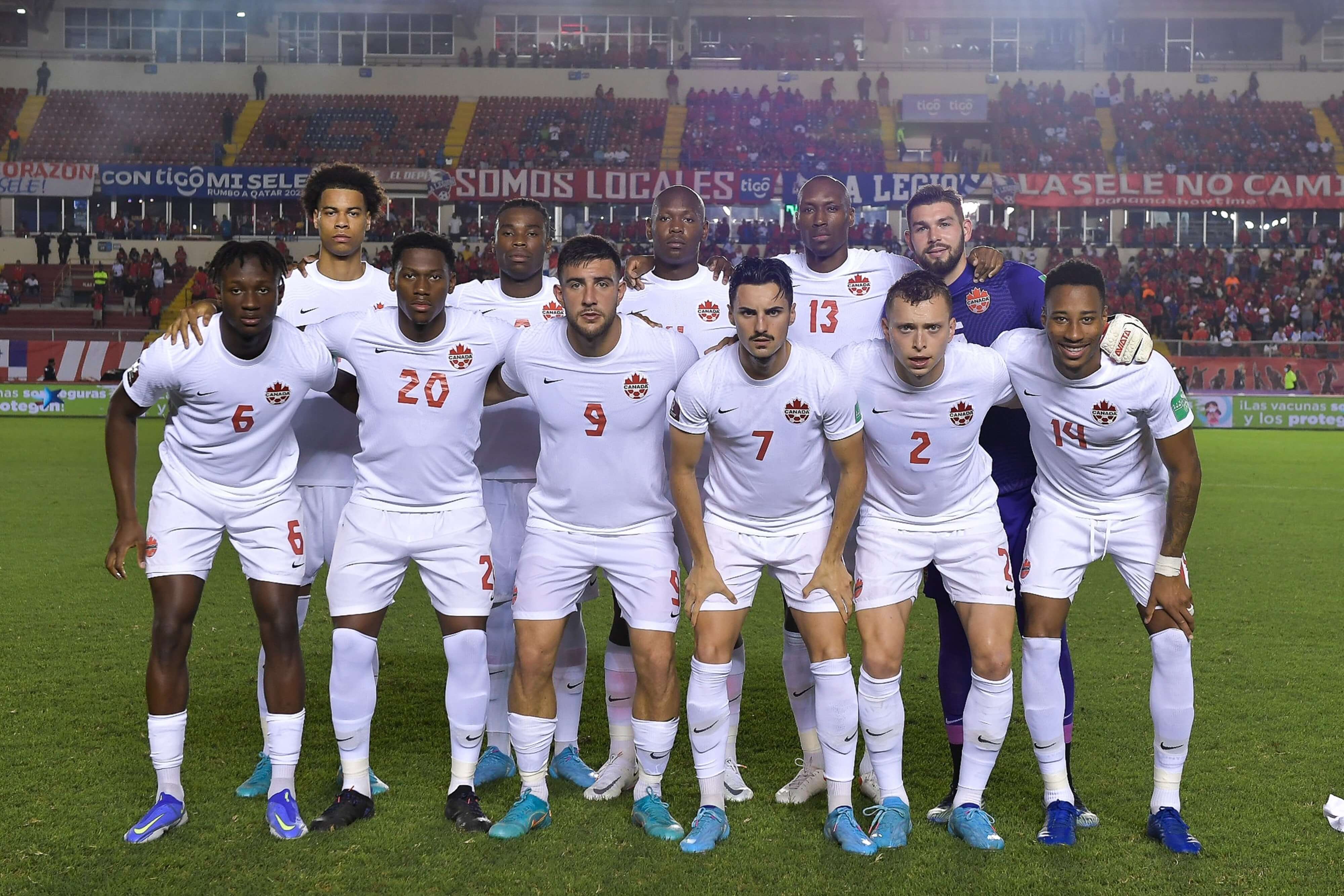
Croatia's second game will be against Canada on November 27 at the Khalifa International Stadium. (Image: @CanadaSoccerEN/Twitter)
Finally, Belgium will surely be Croatia's big test, and many believe that it will be between them who will go through to the round of 16 as group leader. But despite the fact that some point out the bad moment and the injuries of Eden Hazard at Real Madrid, the lack of continuity of Romelu Lukaku at Chelsea, or the departure of emblematic defenders such as Vincent Kompany or Thomas Vermaelen, the truth is that the Belgian team also has reasons to go far. A team that has Kevin De Bruyne (Manchester City), Thibaut Courtois (Real Madrid), Yannick Carrasco (Atlético Madrid), Axel Witsel and Thomas Meunier (Borussia Dortmund) at the peak of their football maturity, as well as many youngsters who will refresh the team with their mischief, like Youri Tielemans (Leicester City), Alexis Saelemaekers (Milan), Albert Sambi Lokonga (Arsenal) or Jérémy Doku (Rennes), is a team to bet on as World Cup champions. In 2018, they were the third-place team behind Croatia.

Croatia will close the group stage against Belgium on December 1 at the Ahmed bin Ali Stadium. (Image: @BelRedDevils/Twitter)
So if the group is not as easy as we thought, why would it be a reason to dream? Although I insist that confidence comes from not underestimating the rivals but instead being cautious, other groups have more even teams. Group E has Spain, Germany, and Japan (waiting for Costa Rica and New Zealand). Group H has Portugal, Uruguay, South Korea, and Ghana. Croatia will first play Morocco, then Canada, and will play the last game of the group stage against Belgium. If Croatia believes in its chances, it could arrive with six points to face the Belgians and fight for first place in the group. But, of course, those six points must be won first, and for that, they will have to be at the same level as the Moroccans and the Canadians.
A new generation of Croatian football players
Something that surprised (and saddened) everyone after the World Cup in Russia was the retirement from the national team of many players who were part of that wonderful team that got second place: Danijel Subašić, Vedran Ćorluka, Ivan Rakitić or Mario Mandžukić. Likewise, some starting players have been left out due to physical problems, such as Ivan Strinić, or behavior, such as Ante Rebić.
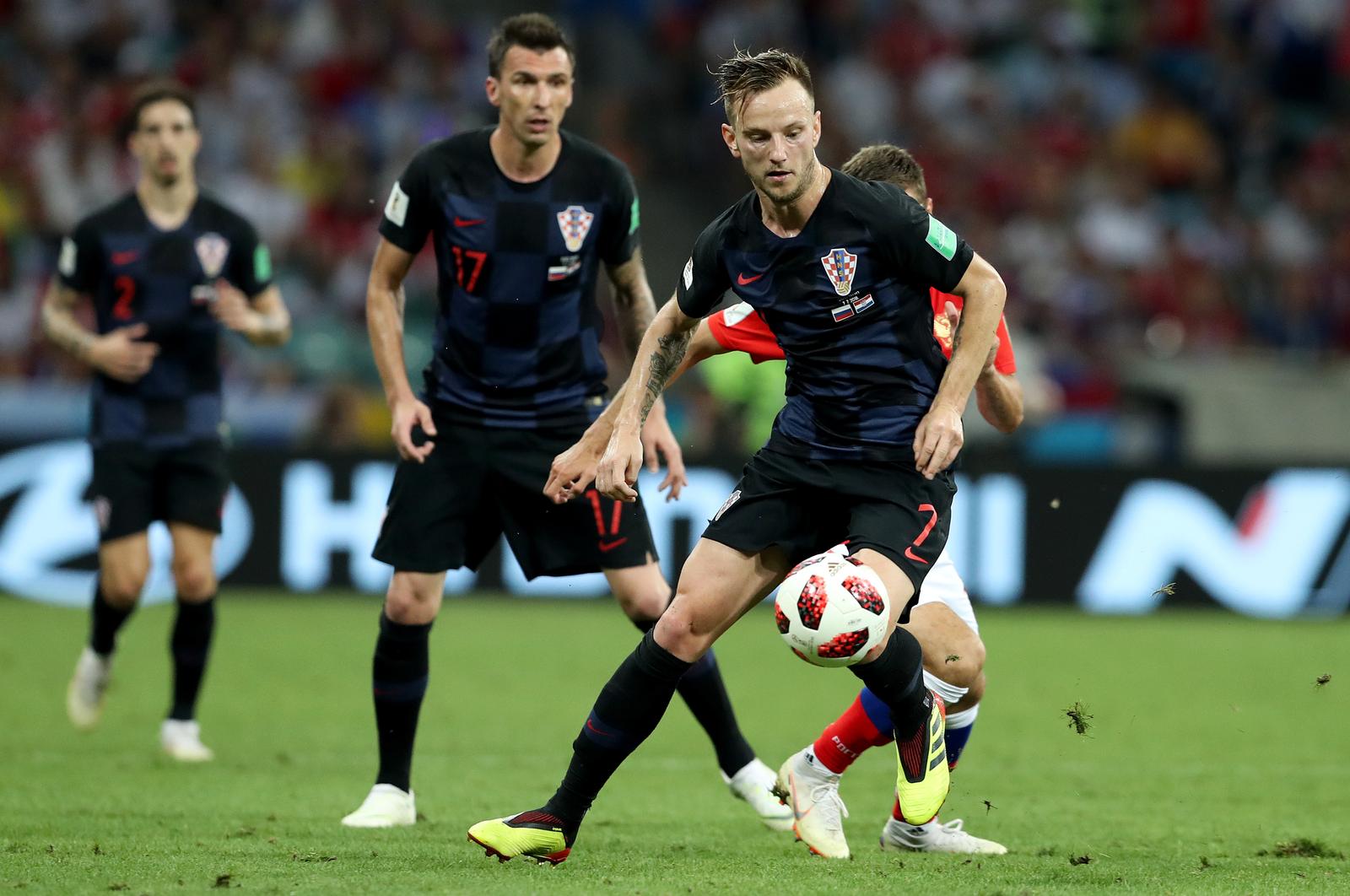
Mario Mandžukić and Ivan Rakitić, two key players who are no longer part of the Croatian national team. (Photo: Igor Kralj/PIXSELL)
It is difficult to deny the negative impact of their absences on the Croatian team, and this could be seen in the subsequent Nations League (2018-19 and 2020-21) and Euro 2020, where it seemed that Dalić's team could not find a way to cover their exits.
But the Croatian team, especially in the second part of the World Cup qualifying phase, seems to have found several young players who will make their debut in the top competition, and nourish the team with their energy and desire. Dominik Livaković (Dinamo Zagreb) in goal, defenders Borna Sosa (Stuttgart), Joško Gvardiol (RB Leipzig), and Josip Juranović (Celtic), midfielders Nikola Vlašić (West Ham), Nikola Moro (Dynamo Moscow), and Lovro Majer (Rennes), and striker Josip Brekalo (Torino) are some of the players who will complement the more experienced players.
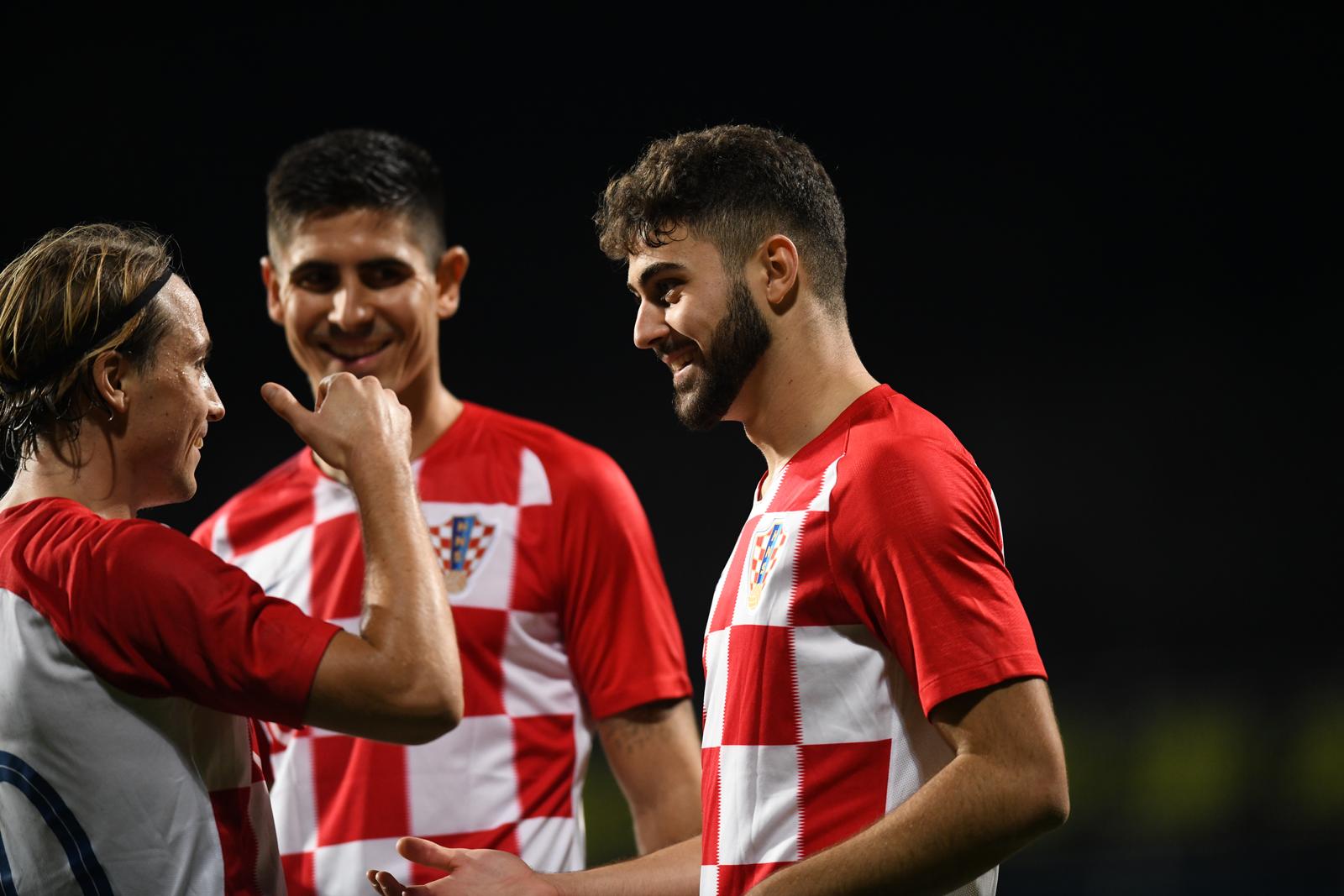
Lovro Majer (left) and Joško Gvardiol (right), two young Croatian players who are called to renew the national team with their youth and projection. (Photo: Josip Regovic/PIXSELL)
Likewise, and despite not being as young as those already mentioned, some players who did not go to the last World Cup will also have the opportunity to bring the best of their talent and experience to the Croatian team. Marko Livaja (Hajduk Split) and Mislav Oršić (Dinamo Zagreb) shine in the Croatian First League and will help Vatreni regain offensive power with their fighting spirit.
In the last games that gave Croatia the qualifying ticket, these players showed not only to be decisive but also made it clear that they are ready for any football challenge. Many of them are starters for their clubs and in competitive leagues, and some of them are even starters for the national team. Let's hope Dalić gives them the opportunities they need to shine and gain experience.
Experience all around the field
And while many of the players who achieved the epic in Russia are no longer in the squad, Croatia will need more than ever of those who stayed. Croatia will need their leadership, their experience, and their hunger for revenge. An extremely young team is not always good, and neither is a team with a lack of renovation. But Croatia seems to have found that balance, and in all lines.
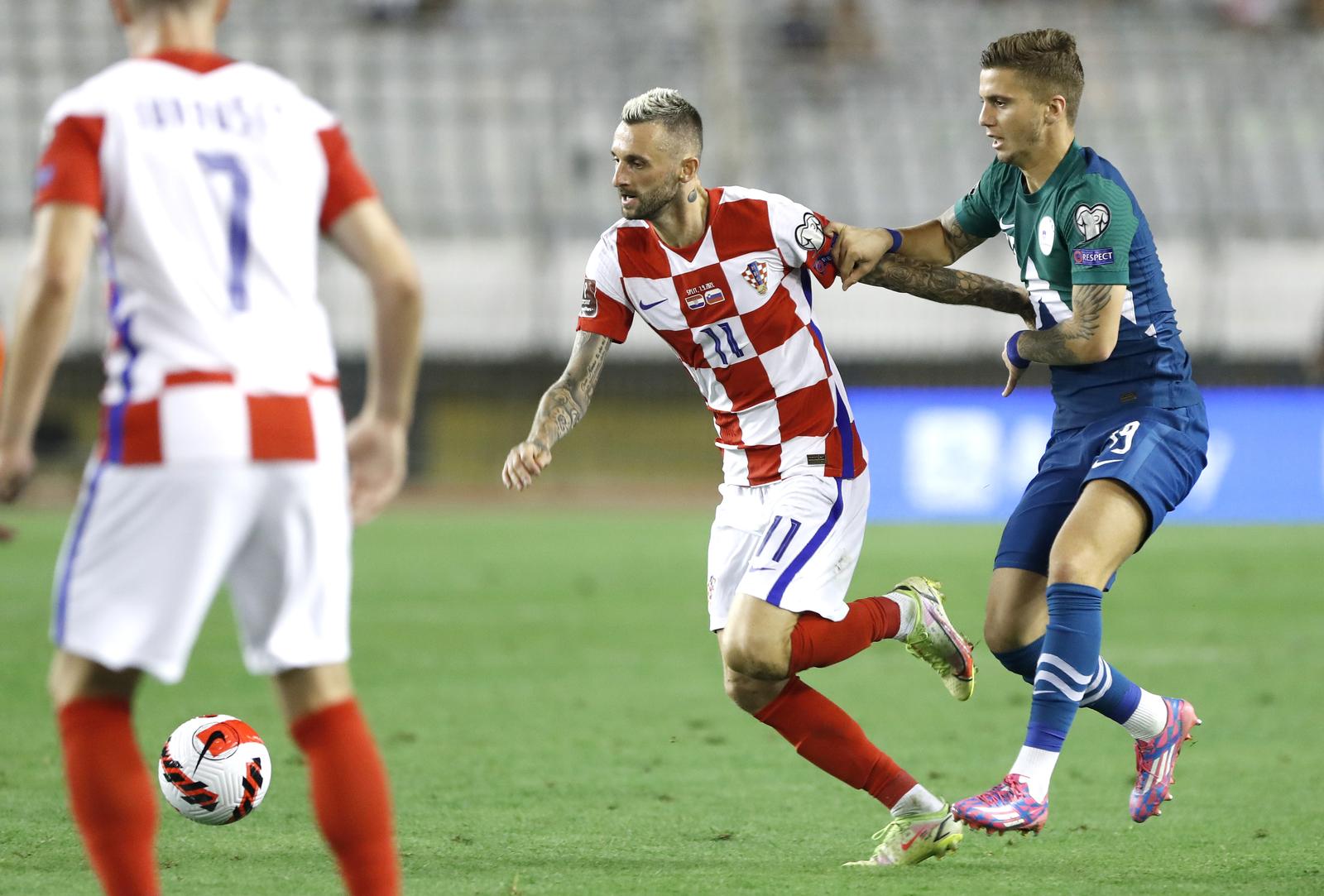
Marcelo Brozović, the undisputed midfield leader at Inter Milan who became champions of Serie A in the 2020-21 season. (Photo: Milan Sabic/PIXSELL)
The good news for Dalić is that several of the players who were in Russia, despite now being four years older, are in even better sporting form than they were back then. Marcelo Brozović has established himself as the decisive player in Inter Milan's midfield, ending Juventus' reign in Serie A last year and fighting for a second consecutive Scudetto this season. Also at Inter, Ivan Perišić has managed to maintain his status as a starter, and despite the passing of the years, Ivan continues to be a benchmark in the Neroazzurro attack, as he proved himself by winning the 2019-20 UEFA Champions League during his loan spell at Bayern Munich.
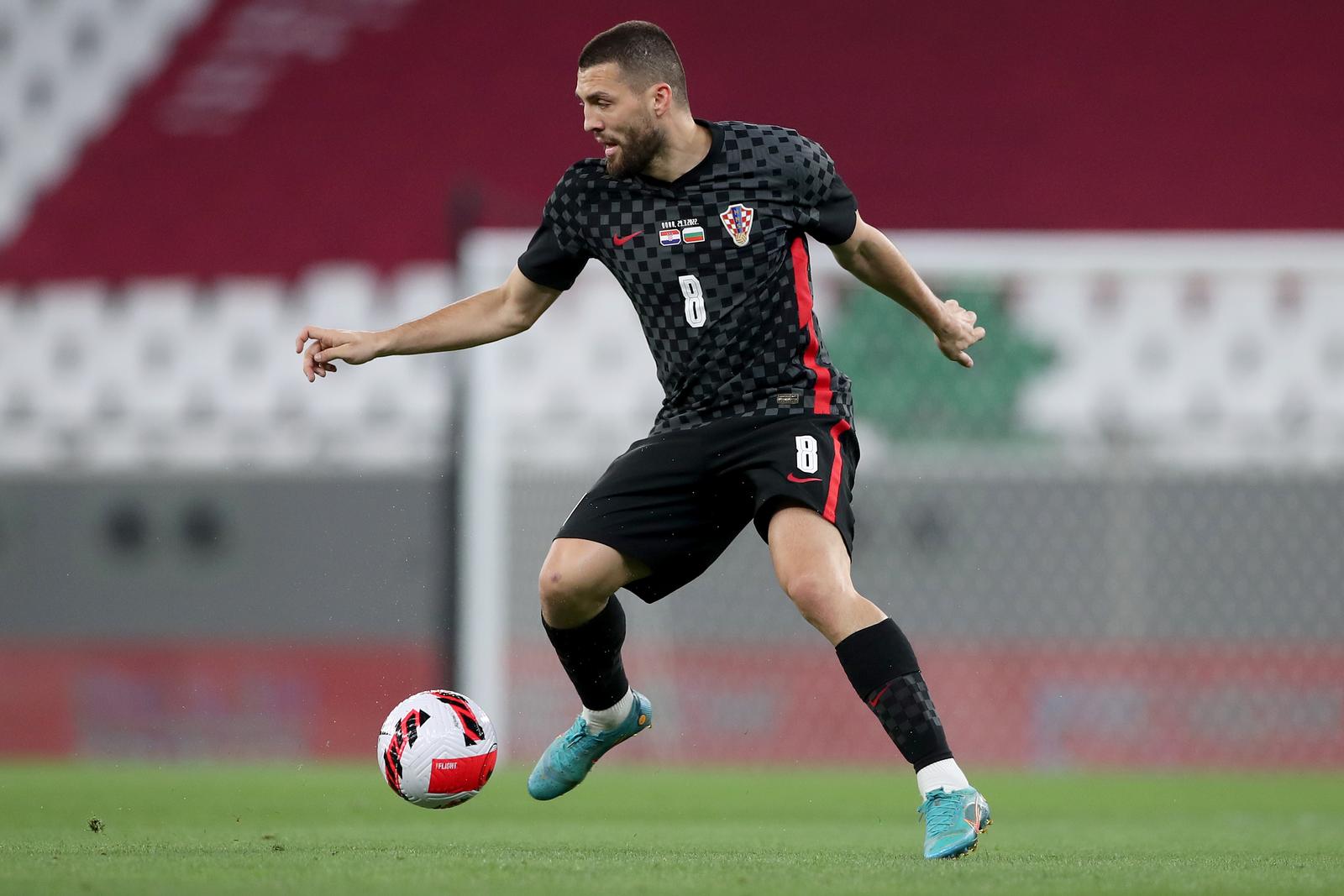
The last seasons of Mateo Kovačić at Chelsea have been spectacular and he is called to be the companion of Modrić and Brozović in the Croatian midfield after the retirement of Ivan Rakitić. (Photo: Igor Kralj/PIXSELL)
Mateo Kovačić, who played a more secondary role in 2018, is now indisputable in Thomas Tuchel's plans at Chelsea, with whom he won the 2020-21 UEFA Champions League, in a midfield that also includes players like Kante, Jorginho, or Saul. Many fans of the London team consider him not only his favorite but also the best. In defense, Dalić still has Domagoj Vida and Dejan Lovren, who in 2018 showed the world their valuable fighting spirit on the field, something that they can still pass on to the younger players.
World Cup calendar
Due to the high temperatures in Qatar between June and July, the usual format of the World Cup will change for the first time in its history. Now, the opening match will be on November 21, while the final will be on December 18. Previously, the group draw was held in December, six months before the start of the tournament. This year, the qualified teams already know their rivals with more than eight months to go until the start of the World Cup. Also, after the draw in December, the players used to face only the second part of the season and some friendlies before integrating with their national team in June.
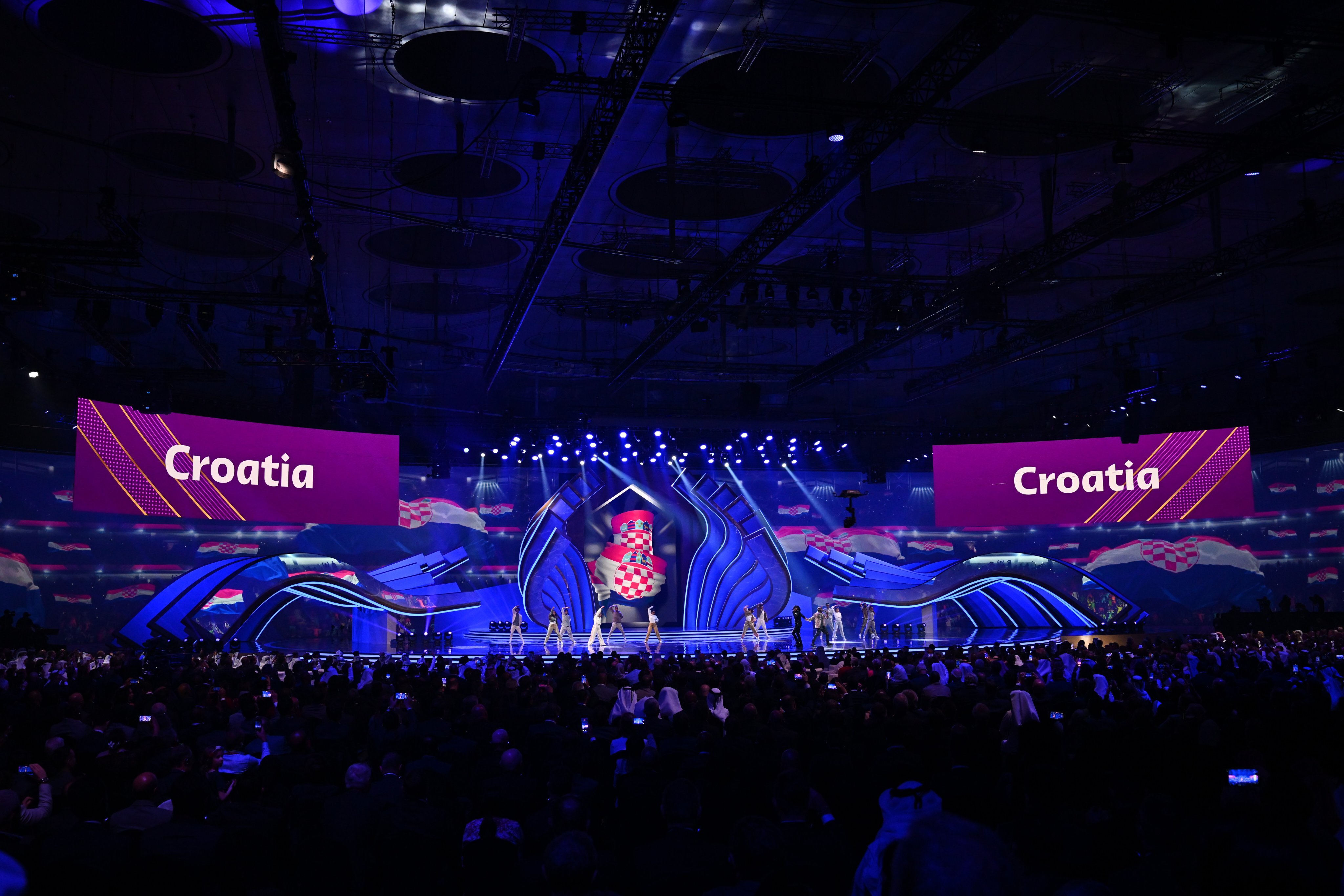
Contrary to previous editions, the World Cup will take place between November and December, and the draw for the group stage will take place in April. (Image: @HNS_CFF/Twitter)
In this way, Zlatko Dalić not only has two additional months to evaluate his players well before making a final decision on his squad in October or November, but he will do so by playing high-competition matches such as the Nations League, in a group that they make up France and Denmark (qualified for the World Cup in Qatar) and Austria, which reached the playoffs. Thus, some players who were not part of the qualifying process from the beginning will have more opportunities to show that they can be decisive in Dalić's tactics. Sometimes four friendlies before the World Cup are not enough to draw any conclusions about line-ups and strategies.
On the other hand, the Croatian players will play two different seasons before the start of the World Cup: the second part of the 2021-22 season, and the first part of the 2022-23 season. This can be beneficial for three main reasons. First of all, some players who are currently not playing many games as starters (Nikola Vlašić at West Ham or Šime Vrsaljko at Atletico Madrid), can solve their situation with a transfer or loan to another team during the summer, and from this way to pick up more form by playing more games.
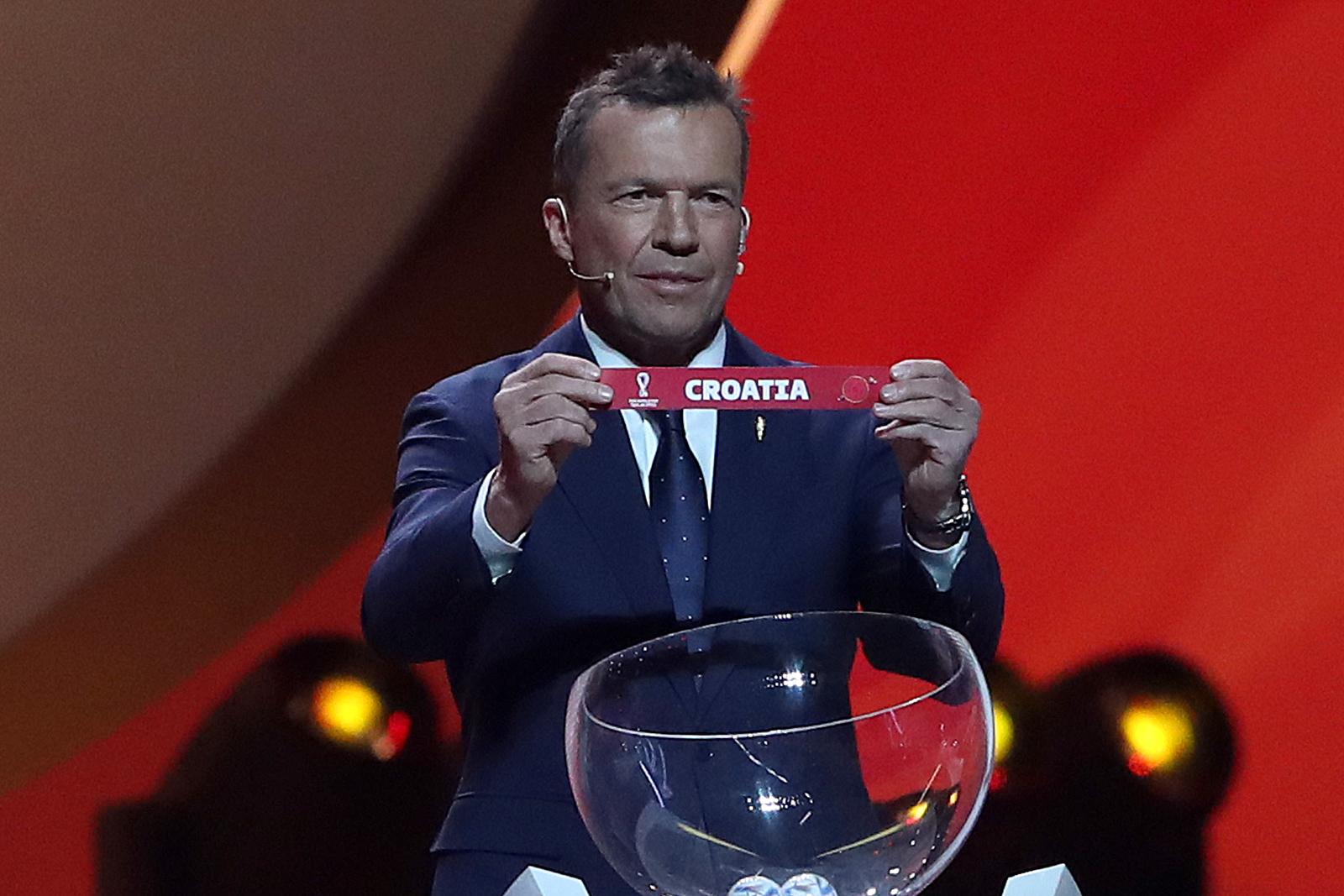
Croatia already knows its rivals eight months before the start of the World Cup, enough time to study them and prepare. (Photo: Igor Kralj/PIXSELL)
Secondly, some players like Ivan Perišić at Inter, Mateo Kovačić with the current problems at Chelsea, or Dejan Lovren at Zenit, can resolve the contracts with their current clubs, and thus become more focused on the field and the Croatian national team.
Finally, and taking into account the competitiveness of the second part of the season, many football players used to miss the World Cup in June as there was not much time to recover from their injuries, some even minor. If it were the case (hopefully not) that a Croatian player suffered an injury in these months, it is possible that they could recover before the World Cup in November, especially considering the rest months between June and July.
The Croatian national team has everything to arrive in good physical condition and great concentration in November, and Dalić to decide on a harmonious line-up and strategy, which could help them face their rivals in Group F with a lot of preparation.
One of the Best Players in the World
Croatia did not get third place in France '98 with a single player, nor the second place of Russia in 2018. Football is a team sport, and to win a World Cup eleven players is not enough, but a complete squad with players committed to a common goal. That is the reason why Croatia reached the final against France before other teams like Argentina, Portugal, or Brazil.
However, if in your squad you have a uniquely talented player, an undisputed figure in one of the best football clubs in history, a leader with 16 years of experience in the national team, and an endless fighting spirit when it comes to attacking and defending even in the 120th minute, it is enough to motivate an entire country and make them believe that they can go very far. Some still believe to this day that Luka Modrić received the 2018 World Cup best player trophy, the Ballon d'Or, and FIFA The Best as consolation after losing the final against France. If his season with Real Madrid (where he was decisive in winning the 2017-18 UEFA Champions League) and his goals and performance in the 2018 World Cup were not enough, Luka has shown them today that he is more relevant than ever and one could even say that he's in the best moment of his career.
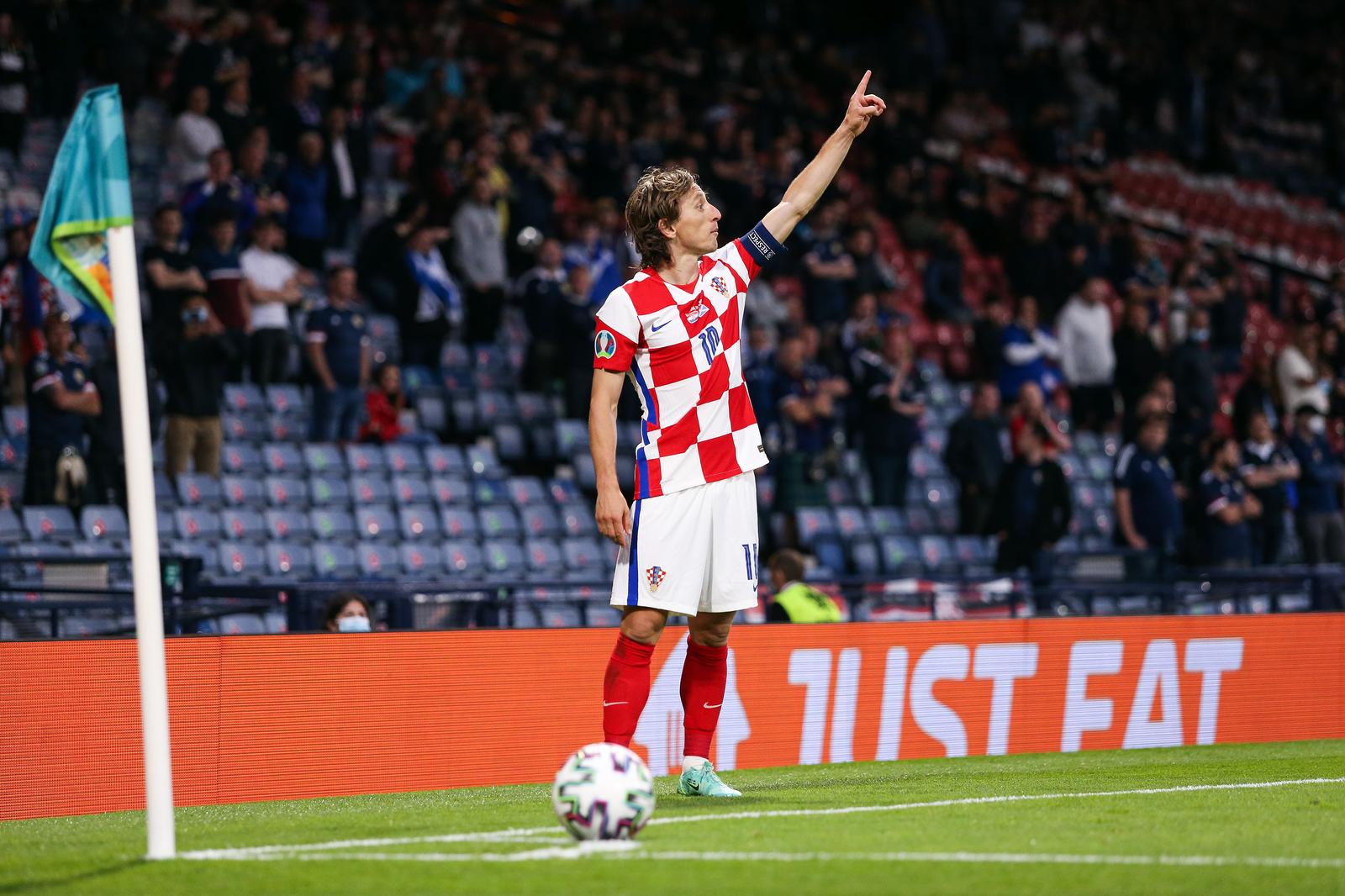
Luka Modrić will play his fourth and last World Cup at the age of 37 and in great shape. (Photo: Luka Stanzl/PIXSELL)
Since he secured a place in Real Madrid's starting eleven in the 2013-14 season with Ancelotti (winning the UEFA Champions League along the way), no player has been able to take his place. Along the years, Luka has seen how several midfielders have come, gone, and stayed: Sami Khedira, Xabi Alonso, Mesut Özil, Asier Illarramendi, Isco, James Rodriguez, Toni Kroos, Martin Odegaard, Casemiro, Dani Ceballos, Federico Valverde, Eduardo Camavinga... but the Croatian has always been a constant, and has recently reached an agreement with Real Madrid to extend his contract even further.
Luka will arrive at the World Cup at the age of 37, probably being one of the oldest among all players. However, and as has been shown in this season of the Spanish La Liga (where Real Madrid is close to winning the title with a great difference in points over their rivals) and in the UEFA Champions League, the Croatian captain is in a great moment of form and with intact talent and technique. Also, Modrić's style of play and his position on the pitch are essential for the team's performance. Some rely on goalkeepers, central defenders, or even forwards as the star of the team, but Croatia sees having a player who is among the best in the world in attacking and defensive work as the key to success.
Luka assists, scores goals, recovers balls, and, above all, leads his team by example and attitude. This will be his last World Cup for him, and we are sure that he will want to say goodbye to the national team in the best possible way and with him a team with talented players who will help him lead Croatia back to glory.
To read more about sport in Croatia, follow TCN’s dedicated page.
Considerable Number of Ukrainian Refugees Might Stay in Croatia for Good
ZAGREB, 3 April 2022 - Over 11,000 Ukrainians have found refuge in Croatia after their country was invaded by Russia on 24 February, and a considerable number of them might stay for good, according to estimates by the Ukrainian community in Croatia.
According to the United Nations, more than 4 million people have fled Ukraine in the five weeks since the start of the war and about 6.5 million have been internally displaced. That is over 10 million people, or about a quarter of the country's population, which is the most massive migration in modern European history.
Viktor Filima, a representative of the Ukrainian community in Zagreb, told Hina in an interview that Poland would most likely take in all the displaced persons, but that it was questionable whether it would be able to physically endure the pressure.
Croatia has expressed its intention to take care of 20,000 displaced persons, and can expect more arrivals. Filima said that a considerable number of refugees would stay even if the war were to end soon because it would take time before Ukraine rebuilts its damaged infrastructure.
According to Filima, the refugees' primary wish is to return to their homes as soon as possible, but many of them are not aware that they will have to stay longer because their cities and infrastructure have been razed to the ground.
Filima said that Croatia had proved to be well organised as it had taken care of all the refugees.
The first migrations of Ukrainians to Croatia began at the time of Austria-Hungary 130 years ago. Before the Russian invasion of Ukraine, the Ukrainian community in Croatia was between two and three thousand strong, and now their number could increase tenfold.
30 per cent of refugees highly educated
Representatives of the Ukrainian community see potential in the migration, saying that Croatia could benefit from Ukrainian refugees because 30% of them are highly educated people, including medical doctors who are in short supply in Croatia.
The head of the Ukrainian community in Zagreb, Marija Meleško, who studied the Croatian language and literature in Kyiv and has been living in Croatia for 15 years, says that refugees are not aware that they will stay here longer than they expect.
Some of the refugees who arrived in the first wave have applied for temporary protection and some of those who have obtained temporary protection cards have already enrolled their children in school. Only a small number of refugees have expressed their desire to work because they first need to learn basic Croatian and meet other requirements for integration into the labour market.
Meleško said the majority of refugees were women and children because men below 60 years of age must not leave Ukraine, with the exception of parents with children with disabilities or with several children.
"Before thinking of how to find work, mothers first need to settle their status and enrol their children in school or kindergarten," she said. Another problem is the recognition of qualifications for work in a regulated profession, which takes time, especially for medical doctors. Ukraine is not a member of the EU, and in order to get a job in Croatia, doctors first need to have their degree recognised and learn Croatian, she added, hoping that this process will be accelerated.
Regulating status is not a problem because displaced persons only need to apply for temporary protection via the bilingual website Croatia for Ukraine, which also provides other information. With a temporary protection card, they can exercise their rights to education, health insurance and all other rights enjoyed by Croatian nationals.
Nearly half of the refugee population are children, many of whom have been enrolled in kindergarten or school, and they will not have trouble integrating, Filima said. "If the war continues, they will make friends and get to know their neighbours. Some will enrol in university or get a job, and when they see that they have nowhere to go back to, a good many of them will probably stay."
Filima believes that the integration process will not be a problem because the two languages are similar. "The Croatian language is Ukrainian written in Latin", and there are also cultural and visual similarities between Ukraine and Croatia, he said. He also believes that it will be easier for Ukrainians to continue their lives in Croatia because of Croatia's experience with the war from the 1990s.
Meleško said she had noticed that the refugees could feel the support and sympathy in Croatia. "What they are getting, the understanding of the situation in which they have found themselves, because Croatians themselves have gone through similar ordeals in the past, is creating a positive atmosphere of hospitality and giving them the feeling that they can be part of this society."
Meleško believes that children will fit into the education system very quickly and will have no trouble learning the language.
According to official information from Saturday, the majority of Ukrainian refugees in Croatia, namely 10,292 out of 11,791, are in individual accommodation. Most of them are accommodated in continental Croatia, and to a lesser extent in Dalmatia and Istria.
For more, check out our dedicated lifestyle section.
Croatia Logs 809 New Coronavirus Cases, 9 Deaths
ZAGREB, 3 April 2022 - Croatia has recorded 809 new coronavirus cases and 9 COVID-related deaths in the last 24 hours, the national coronavirus response team reported on Sunday.
The number of active cases in the country currently stands at 8,946. Among them are 648 infected people who are being treated in hospitas. 38 of them are on ventilators, while 6,399 persons are self-isolating.
Since 25 February 2020, when the first case was confirmed in Croatia, 1,102,730 people have been registered as having been infected with the SARS-CoV-2 virus, of whom 15,601 have died and 1,078,183 have recovered, including 1,557 in the last 24 hours.
A total of 4,691,685 people have been tested for the novel virus, including 3,867 in the last 24 hours.
By Saturday, 5,227,996 COVID-19 vaccination doses had been administered and 59.44% of the total population, or 70.70% of adults, had been vaccinated. A total of 2,311,202 people had received at least one vaccine dose and 2,238,604 of them had been fully vaccinated, which is 68.59% of the adult population.
For all you need to know about coronavirus specific to Croatia, make sure to bookmark our dedicated section and select your preferred language if it isn't English.


